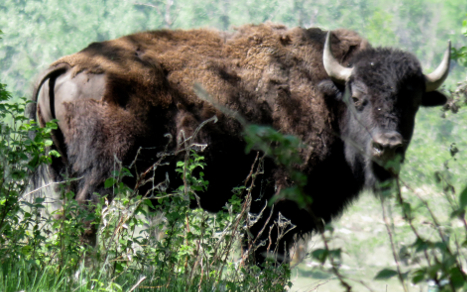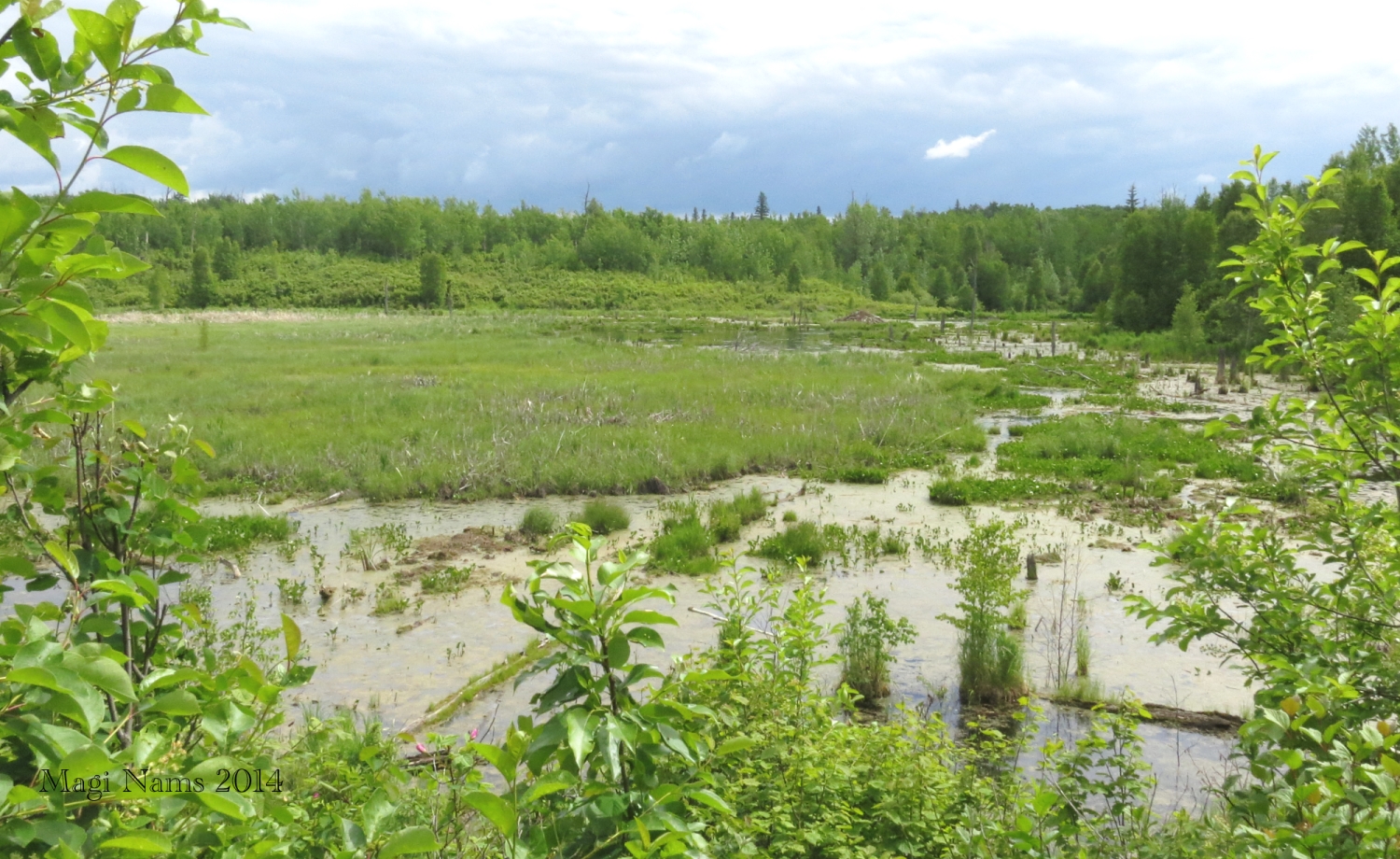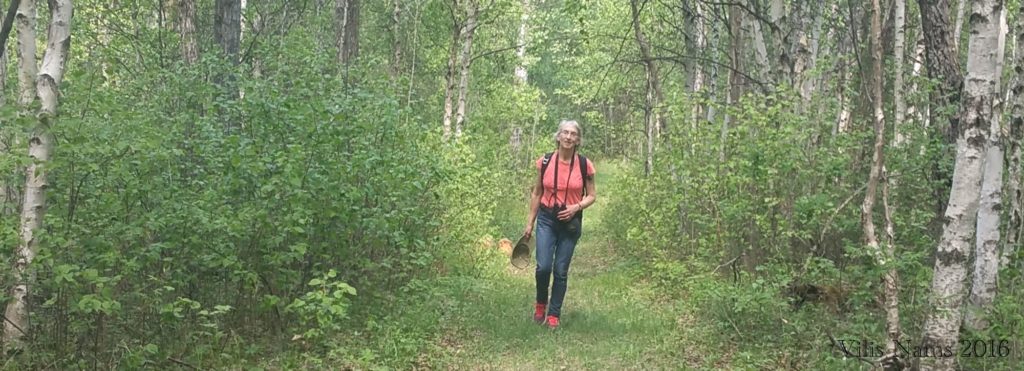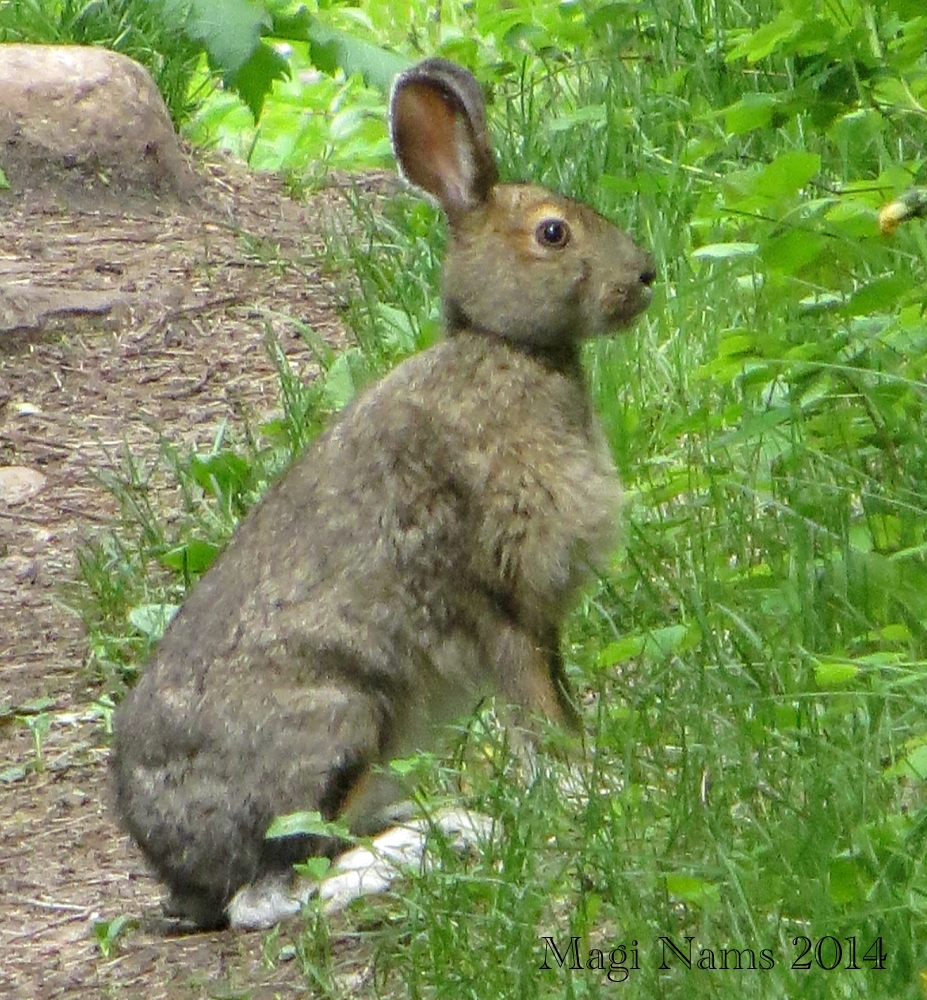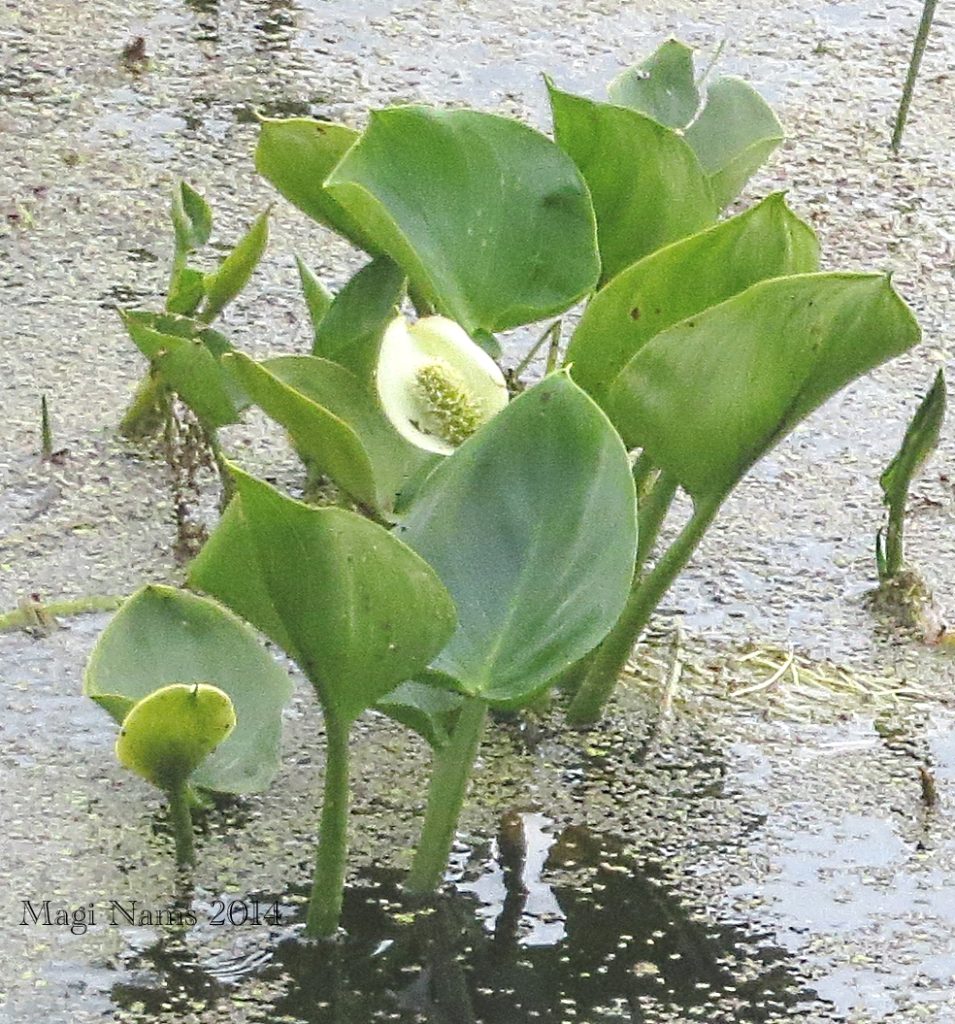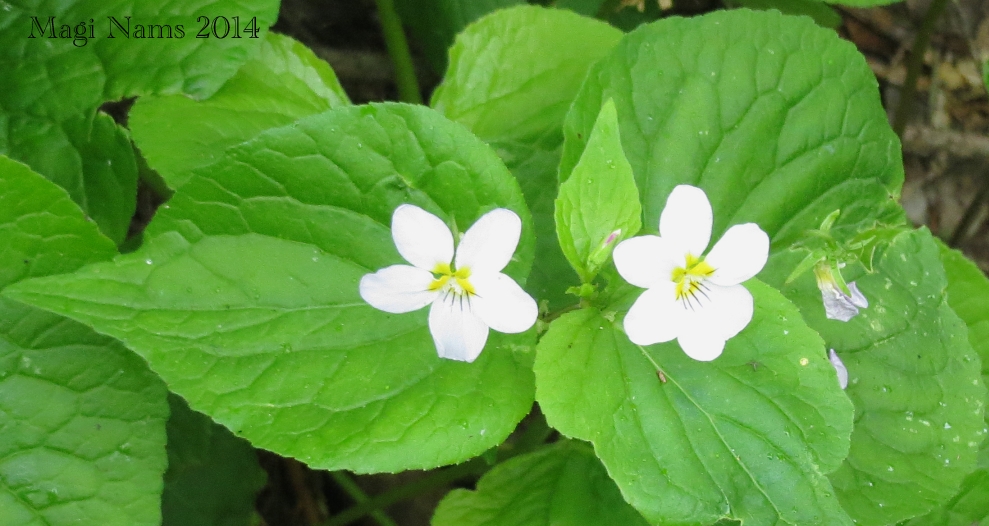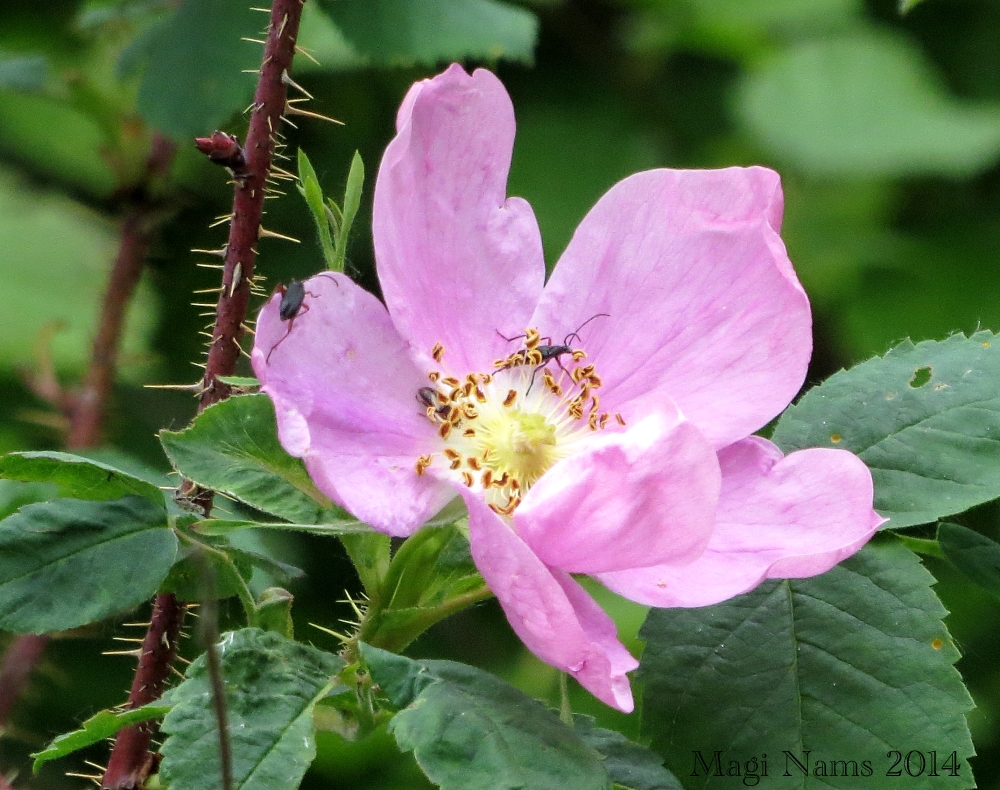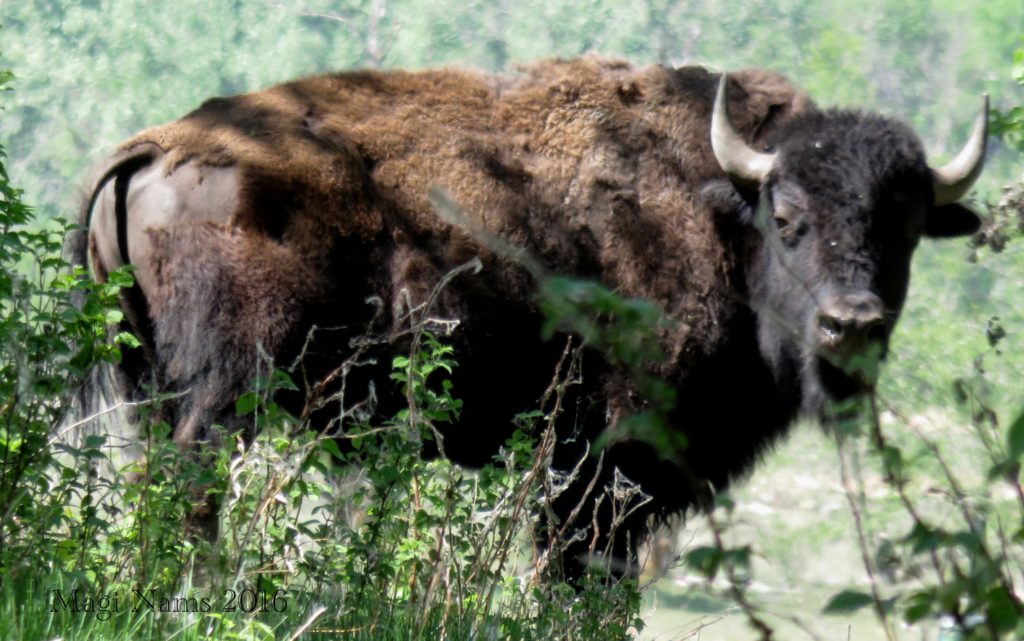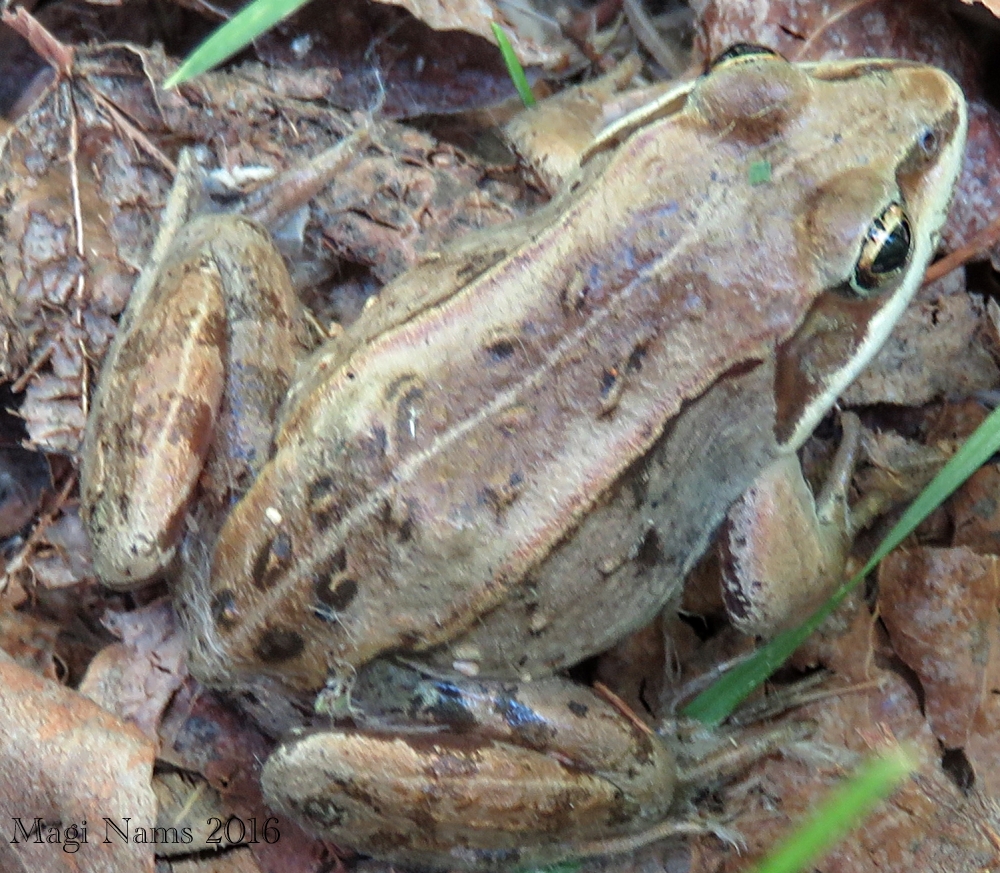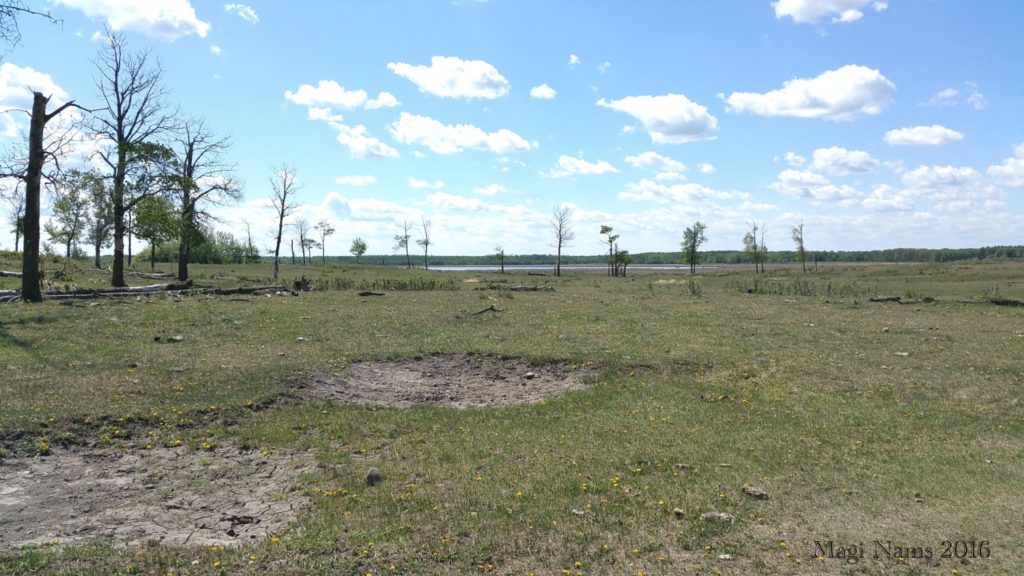Want a Canadian hike on the wild side? Elk Island National Park, Alberta, offers more than 80 kilometres of trails and chances for viewing big game, including bison.
Elk Island National Park encompasses 194 square kilometres of gently rolling hills interspersed with many lakes and wetlands. It is located in east-central Alberta (about 35 kilometres east of Edmonton) and is divided into two sections, neatly separated by Highway 16. The park’s “knob and kettle” topography is the result of past glaciation. Major habitats include aspen woodland, grassy meadows, boreal forest, beaver ponds and lakes. Top prospects for wildlife viewing include wood bison, plains bison, moose, elk, mule deer, white-tailed deer, black bear, grey wolf, coyote, beaver and many bird species, including white pelican and red-necked grebe. Elk Island National Park is Canada’s only fully fenced national park and features more than 80 kilometres of hiking trails, most over gentle or moderate terrain. (Tap on photos to enlarge.)
Two years ago, on June 16, 2014, I did a solo hike of three trails in the northern, Astotin Lake section of Elk Island National Park: Beaver Pond Trail, 3.5 kilometres; Shoreline Trail, 6 kilometres; Amisk Wuche Trail, 2.5 kilometres. This spring, on May 17, 2016, Vilis and I hiked the 16.5-kilometre Tawayik Lake Trail in the park’s central section.
During my solo hike, I approached each curve in the trail with heightened awareness, wondering if I’d encounter bison around the corner. I didn’t; however, I did spot a snowshoe hare grazing at the trail edge and an ermine (short-tailed weasel) that scurried back and forth beside a fallen log before disappearing into aspen forest. Waterfowl (Canada goose, blue-winged teal, greater scaup, ruddy duck, gadwall, mallard, ring-necked duck, green-winged teal and American wigeon) floated on beaver-engineered wetlands that also featured mud-plastered muskrat houses and elegant wild callas.

White-throated sparrow (Zonotrichia albicollis), tan-striped morph, Elk Island National Park (© Magi Nams)
The voices of songbirds (white-throated sparrow, red-eyed vireo, least flycatcher, yellow warbler, song sparrow, common yellowthroat, American robin, yellow-rumped warbler, ovenbird, eastern phoebe, Lincoln’s sparrow and others) lit the air with bright music.
Blossoms of prickly rose, bluebells, western Canada violet, and bunchberry added a delicate touch of beauty to the woodland trails.
During my hike with Vilis this spring, I did spot a plains bison on the Tawayik Lake trail, twenty metres uphill from us. I grabbed my husband’s arm and hissed, “Vilis, buffalo!”
We froze as the bison turned and looked at us, its tail slightly raised. According to a Parks Canada safety leaflet, a bison’s tail indicates how the bison is feeling. Tail hanging=calm. Tail slightly raised=alert. Tail raised into a pronounced curve=alarmed. Tail arched high and fluffed out=angry.
Fortunately for us, the bison’s slightly raised tail indicated that the animal was alert, but not aggressive. I snapped a few quick photographs, then we stepped off the trail into the woods. With our hearts pounding, we waited a couple minutes before cautiously returning to the trail. The bison had disappeared. We hiked up the hill and out into a heavily grazed meadow speckled with bison and elk droppings.
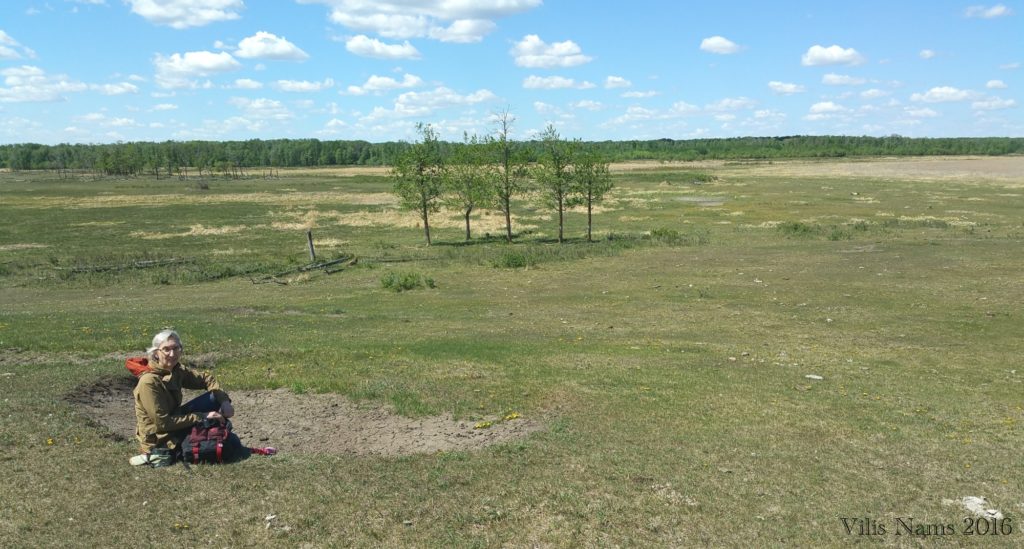
At a bison wallow in a heavily grazed meadow, Tawayik Lake Trail, Elk Island National Park (© Vilis Nams)
Farther along on the trail, we spotted a coyote trotting along ahead of us. It turned its head in our direction then faded into the forest. Earlier, a wood frog had hopped to the trail edge, offering me the opportunity to photograph it.
As on my first hike in Elk Island National Park in 2014, the sound of birds was a constant reminder of the intensity of the avian breeding season, particularly for migratory birds. The harsh cries of displaying red-necked grebes echoed over the forest as Vilis and I skirted a small lake. Yellow warblers, American goldfinches and a rose-breasted grosbeak sang from the woods. California gulls screeched and milled overhead. Red-winged blackbirds whistled from cattail marshes. A flock of Brewer’s blackbirds foraged on the ground in that wide open bison and elk meadow. (See below for a complete list of the birds I noted in the park.)
For anyone interested in hiking through native Alberta woodlands and meadows, with the possibility of spotting wood and plains bison (North America’s largest land mammals) and other wildlife, wildflowers and wild views, Elk Island National Park is a must. As Vilis and I drove out of the park’s “plains bison section” north of Highway 16, we spotted wood bison in the park section that lies south of Highway 16. Next time we’re in east-central Alberta, we’ll hike the “wood bison section” of the park and keep our eyes peeled for this larger and more aggressive bison species.
My bird list from Elk Island National Park: American robin, common yellowthroat, song sparrow, yellow-rumped warbler, red-winged blackbird, least flycatcher, red-eyed vireo, ovenbird, blue-winged teal, greater scaup, eastern phoebe, ruddy duck, gadwall, mallard, Lincoln’s sparrow, sora, ring-necked duck, cedar waxwing, white-throated sparrow, dark-eyed junco, Wilson’s snipe, yellow warbler, red-necked grebe, green-winged teal, ring-billed gull, American coot, American crow, Bonaparte’s gull, Canada goose, brown-headed cowbird, chipping sparrow, tree swallow, rose-breasted grosbeak, lesser scaup, American wigeon, spotted sandpiper, bufflehead, hairy woodpecker, common raven, European starling, clay-coloured sparrow, northern flicker, California gull, Brewer’s blackbird, common goldeneye.
My mammal list from Elk Island National Park: red squirrel, snowshoe hare, ermine, plains bison, coyote, wood bison.

